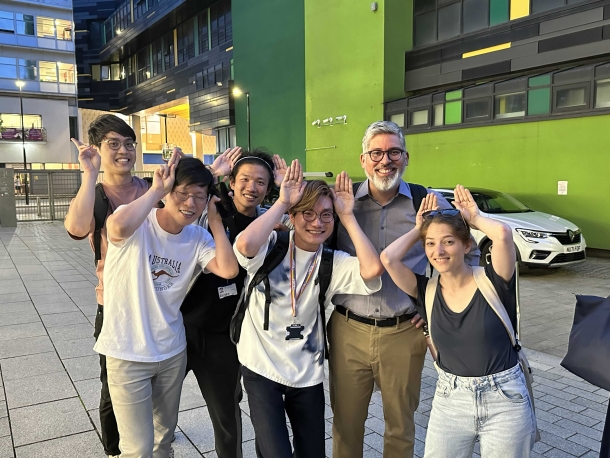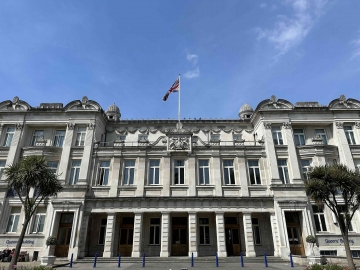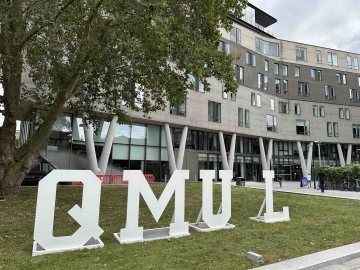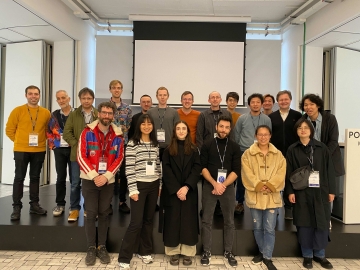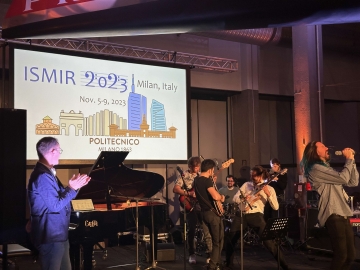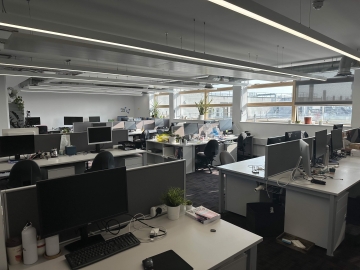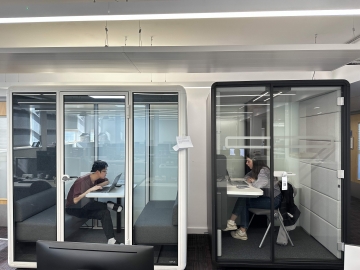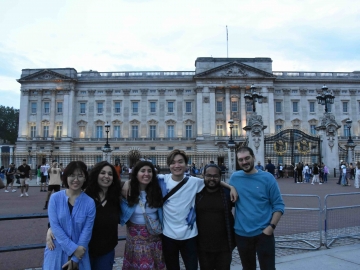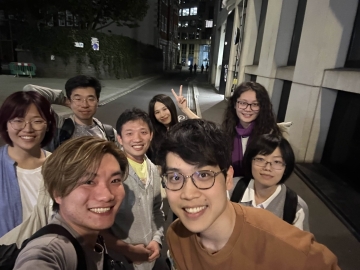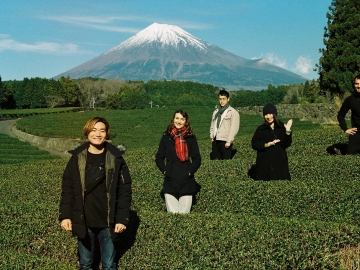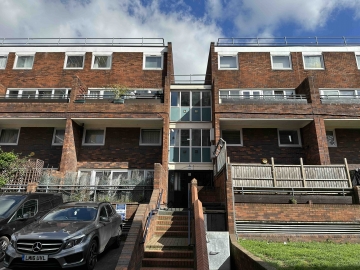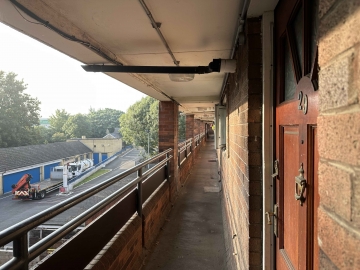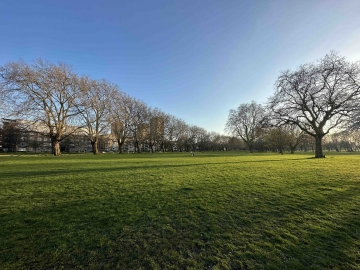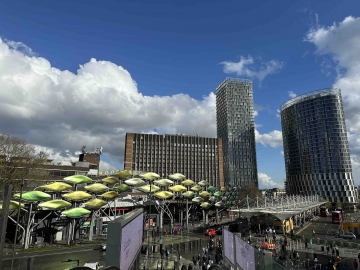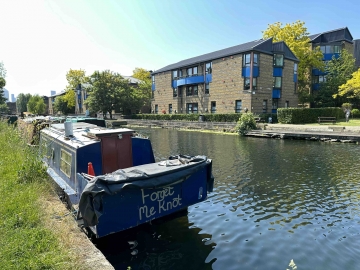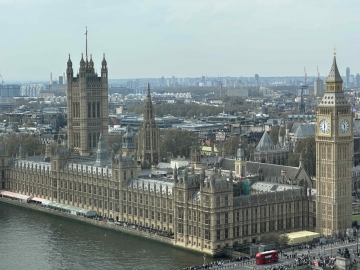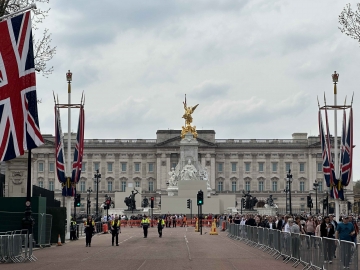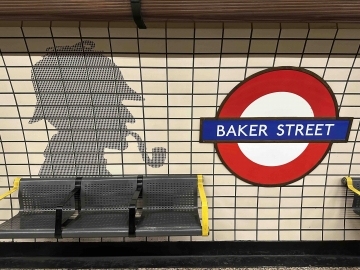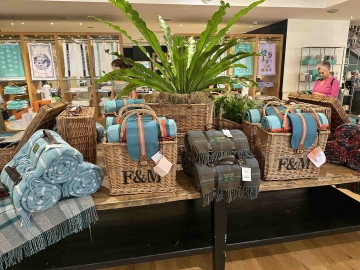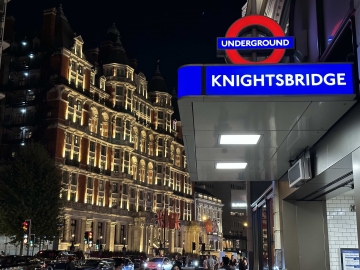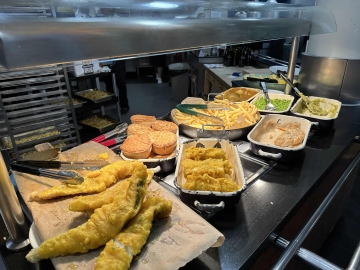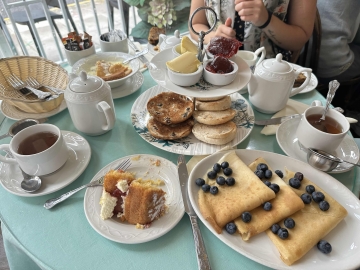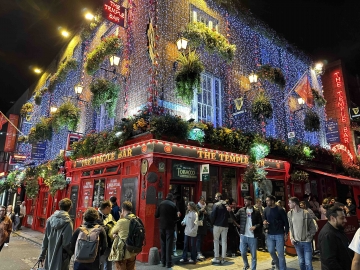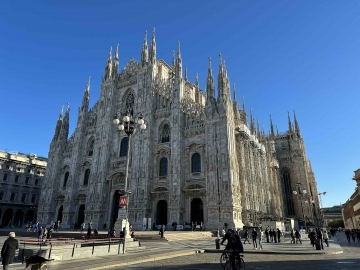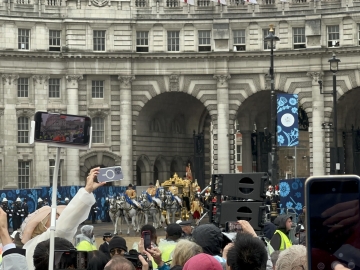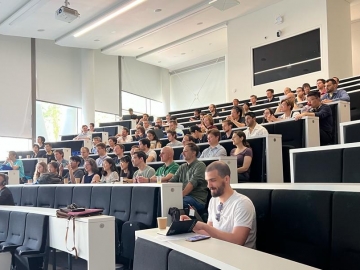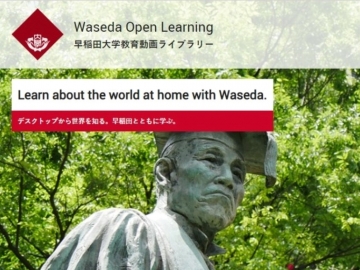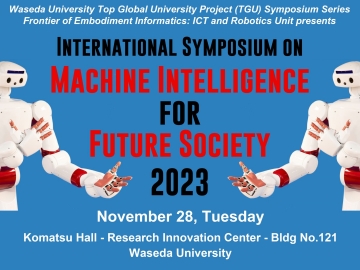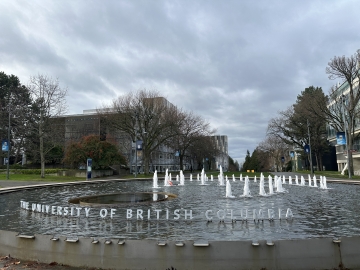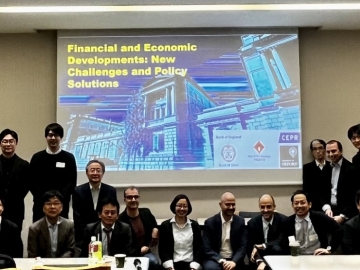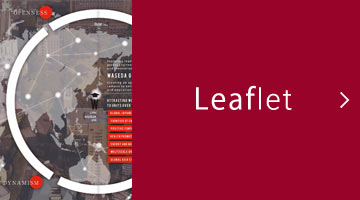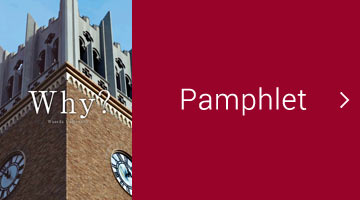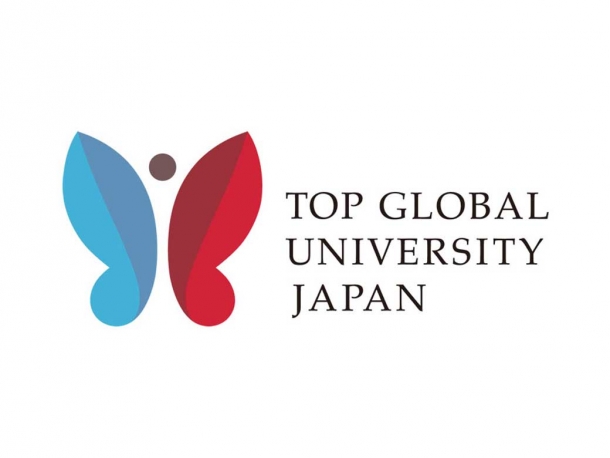Keitaro Tanaka | 2nd year doctoral student, School of Advanced Science and Engineering
- Visiting Period: March 2023 to September 2023
- Study Abroad University: Queen Mary University of London
- Country/Region: London, United Kingdom
Below is a study abroad experience report from Keitaro Tanaka (2nd year doctoral student, School of Advanced Science and Engineering), who was able to go to London, UK, to study at Queen Mary University of London. This study abroad experience was possible due to support from Waseda University’s Top Global University project “Waseda Goes Global”, referred to as TGU below.
Destination and Reasons for Visit
I engaged in research in the field of music information retrieval (MIR) under the supervision of Professor Simon Dixon at the Centre for Digital Music (C4DM) at Queen Mary University of London (QMUL), located in London, United Kingdom. C4DM is a world-leading lab in MIR, with many distinguished staff members and over 70 PhD students. For me, having been involved in this field since undergrad, the university’s environment for conducting MIR research, which is rare in Japan, was a dream. I was pleased to receive support from TGU and decided to visit C4DM.
- Queen Mary University of London
Research and Achievements
During this visit, I focused on instrument recognition in MIR. This task involves predicting all the instruments used in a given musical excerpt, which plays a vital role in other MIR tasks. With recent advancements in deep learning, the accuracy of instrument recognition has significantly improved. However, its accuracy has primarily been evaluated only on benchmark datasets, and there has been a challenge in achieving the expected recognition accuracy on other datasets, especially those with limited data. Through this visiting program, I aimed to improve the accuracy by utilizing artificially created data. Fortunately, I got some findings during the program, and our work was accepted for presentation at the Late-Breaking Demo session of the 24th International Society for Music Information Retrieval Conference (ISMIR2023) held in Milan, Italy.
(Reference: “On the Use of Synthesized Datasets and Transformer Adaptors for Musical Instrument Recognition,” Tanaka et al., ISMIR2023 LBD.)
- Lab members
- ISMIR2023
University Environment
As QMUL is famous for its inclusiveness amongst the universities of London, there were many international students (yet I didn’t encounter any Japanese students). C4DM also had students from at least 15 countries and regions, including Canada, China and Taiwan, France, Germany, India, Italy, Kosovo, Mexico, Portugal, Russia, South Korea, Spain, the UK, and the US. There were not only full-time students but also many visiting researchers like me. C4DM has invested more than six million pounds in new state-of-the-art studios and computing facilities. Due to the impact of COVID-19, soundproof rooms were installed throughout, enabling remote meetings. It was quite a valuable opportunity to engage in research alongside a highly diverse and talented group of researchers and to utilize one of the best research facilities in the world.
- Lab
International Exchange
I spent a lot of time with lab members. We usually had lunch together at The Curve, the canteen in QMUL. Around 6 pm, we often headed to a nearby restaurant, the Half Moon. We enjoyed conversing, from everyday topics to research discussions. Then, we returned to the lab and got back to research. On weekends, we hung out, explored various parts of London together, enjoyed home parties, and tried many different restaurants. One memorable activity for me was watching movies. Watching English films without translation or subtitles was initially challenging, but being in London, where people from diverse backgrounds speak various English dialects, helped me gradually adjust. Spending six months with such an international group of truly brilliant friends was an invaluable experience in my life. Even after returning to Japan, I often see friends I made during this visit. Our collaborations, both in research and in private, are still ongoing.
Living Environment
QMUL is located in East London, with Mile End station being the nearest tube station. Therefore, the living environment differs from that in the middle of London. My accommodation was in an area catering to lower-middle-income households, which was an exciting environment. I sometimes met unexpected visitors. However, there were plenty of natural surroundings, and within a two-minute walk was the vast Victoria Park. Squirrels can be commonly seen among the trees, and birds occasionally flew into my room (some even leaving droppings on the bed). I rented a shared house in Ollerton Green for five people, which I found through a local real estate agency. Each person was assigned a private room, while the shower room, toilet, and kitchen were shared. Everyone came from different countries, which made me feel perplexed, and I struggled to get used to varying lifestyles. I had a tough time at first but slowly learned to understand them.
Two notable aspects of life in London are the weather and cost. As London is often depicted with gray sky, we had frequent cloudy or rainy days. It rained almost every day during winter and spring. I vividly remember how hard it was to do the laundry. On the other hand, summers can be hot. Although London is generally cool, there are a few days in summer when temperatures exceed 40 degrees Celsius. While heating is available, cooling is rare in London, where the latitude is high, making daytime incredibly long (from around 4 am to 10 pm in summer); such days can be tremendously uncomfortable. In terms of the cost of living, I nearly fainted with the combination of cheap yen and high prices in the UK. At the beginning of my visit, the exchange rate was around 150 yen to the pound, but by its end, it had risen to 180 yen. Prices also remained high due to the unstable global situation. The cost of living was approximately three times higher than in Japan. Upon returning to Japan, I was surprised by the low prices compared to the UK.
- Apartment
- Victoria Park
Surrounding Environment
Stratford, located in East London, is a vibrant area popular with young people. It offers amenities such as shopping malls, restaurants, and a football stadium (London Stadium). There were many cafes, bakeries, and authentic Indian restaurants around my accommodation. I frequented several of these shops and found the staff friendly, many becoming friends over time. Although the eastern part has often been recognized as a “darker side” of London compared to the center, it has seen development progress, particularly following the London Olympics, which I experienced firsthand during my six-month stay.
While the River Thames is London’s most famous river, many of London’s rivers are utilized as practical means of transportation. Near my home was the Regent’s Canal, where I regularly saw people living on boats during my daily commute. London boasts a highly developed transportation network primarily consisting of the underground and buses. We can easily access various parts of the city, and I was particularly impressed by the landscape surrounded by brick buildings.
- Stratford
- Regent’s Canal
Culture
The most significant cultural difference I felt compared to Japan was the diversity. I wasn’t aware of this before coming to the UK, but London is remarkably cosmopolitan, where people from various backgrounds live together. As such, not everyone speaks the “British accent” that we generally imagine and a wide range of English accents are used daily. Moreover, many people behave freely, in a good sense, without worrying about other people’s presence. These aspects were shocking and comforting; I could communicate without worrying about my Japanese-flavored English and live without any concerns.
London’s status as a global cultural hub surpassed my expectations. London has a rich history, from the British Museum and the National Gallery to iconic landmarks like Big Ben, Buckingham Palace, and Westminster Abbey. It is home to literary and musical landmarks such as Baker Street and Abbey Road, fashion brands like Burberry and Dunhill, and the concentration of prestigious gentlemen’s outfitters on Savile Row. Harrods and the tea brand favored by the British Royal Family, Fortnum & Mason, as well as the Royal Observatory in Greenwich traversed by the Prime Meridian and locations featured in the James Bond and Harry Potter series, everything was there. Numerous restaurants, casinos, and musicals also make the nightlife animated. While immersing myself in such British culture, I couldn’t help but realize how delicious Japanese food was.
Summary
The experiences I had overseas have profoundly altered my perspective on life and expanded my horizons. In addition to visiting London, UK, I also had the opportunity to attend international conferences in Dublin, Ireland, and Helsinki, Finland, and traveled to Paris, France, for research discussions. Moreover, I visited Milan, Italy, to present the work mentioned above. These experiences abroad have allowed me to gain a multifaceted understanding of both the pros and cons of Japan and other countries. I was particularly surprised that people from overseas had a very favorable interest in Japan as a country and its culture and were even trying to deepen their understanding further through me, a Japanese person. In the future, I aspire to utilize this experience and pursue opportunities to engage globally, irrespective of location, following my interests.
- Dublin, Ireland
- Helsinki, Finland
- Paris, France
- Milan, Italy
Acknowledgements
It was entirely coincidental, but in May 2023, the coronation of Charles III took place, and I had the extraordinary opportunity to witness the crowning of His Majesty the King of the United Kingdom with my own eyes. Furthermore, 2023 marked the 20th anniversary of C4DM, and a memorial festival was held in June. Prominent people in MIR from within and outside the UK gathered, allowing me to engage in conversations ranging from research to career paths and casual chats. It was an exciting time, meeting admired researchers and getting a glimpse into the daily lives of top researchers.
I am deeply grateful to TGU for providing me with such invaluable opportunities. Thanks to the strong support, I was able to fulfill my long-awaited overseas research visit despite the worldwide financial hardship. I sincerely thank Mr. Nishimura and Professor Morishima for their support and advice.
Finally, I thank Professor Simon Dixon and Mr. Yin-Jyun Luo for warmly welcoming me and supporting my research life on-site. Professor Yoshii at Kyoto University helped me in London, Dublin, and Paris. Their support made my visit successful. Thank you from the bottom of my heart.
